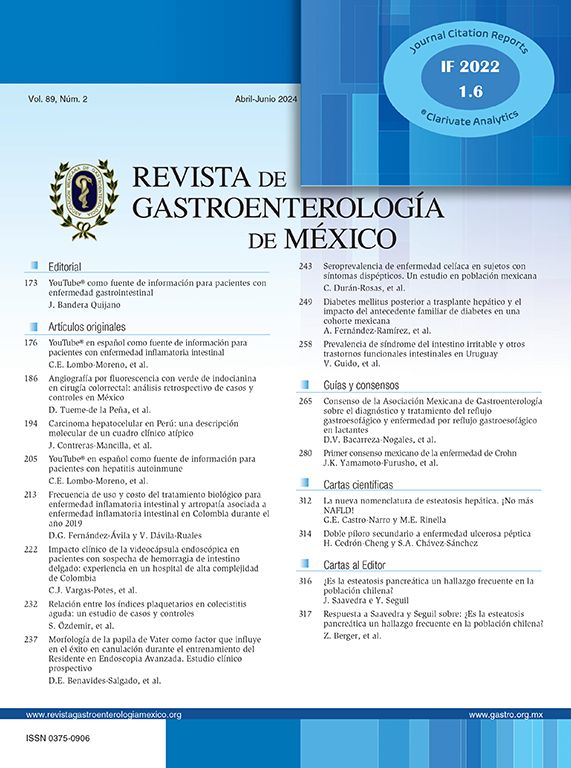To quote Sir William Osler's essay The Student Life, “The hardest conviction to get into the mind of a beginner is that the education upon which he is engaged is not a college course, not a medical course, but a life course.….”
After graduation, physicians face different challenges; one of them is to offer the best available management to their patients. In order to accomplish this, doctors must keep their knowledge updated. Good intentions are not enough; every year hundreds of journals publish thousands of manuscripts. Such a large amount of available information might produce anxiety or even apathy, not only due to our human incapability to read, memorize, and integrate every single journal or article that is published, but also because for many physicians, it is extremely difficult to select quality research, to interpret, and to apply such new knowledge to everyday cases. This is probably one of the many reasons why keeping medical knowledge up to date has become an exhausting battle.
According to Choudrhy et al.1 a physician's clinical performance decreases significantly with age and duration in practice; in other words, the longer the time since graduation, the poorer the knowledge, and the worse the quality of health care provided. Therefore, evidence based-medicine (EBM) has developed as a tool whose purpose is to help physicians keep up to date, expand their knowledge, and improve clinical practice. Studies also suggest that practicing EBM might prevent the unnecessary expense of potentially inadequate prescriptions,2 promote critical thinking, identify and stimulate good practices, and eliminate those that are ineffective or harmful.3 EBM has been defined as the integration of the best available research evidence with clinical expertise and patient concerns and values.4
Thus, in order to practice EBM, physicians should be aware of their own limitations and knowledge gaps, as well as of their patients’ interests, so they can ask the right questions and then search for the most adequate information.
As easy as this might sound, it is insufficient (good intentions are not enough); the critical appraisal and individualization of the consulted evidence are equally important. Only then, will the practitioner be able to keep updated and answer relevant clinical questions that result in appropriate and high quality health care.
Posing a good questionConsidering that the best evidence or the type of clinical study to consult depends on the kind of clinical question, EBM methods suggest applying the PICO-T acronym to structure more focused, relevant, and researchable questions. Every query should reflect most of the letters: P stands for population/patients, problem; I for intervention; C for comparison; O for outcome; and T for time.5
Finding and assessing the evidenceEven for physicians educated in statistics and clinical research, identifying, classifying, and grading the quality of all sorts of published clinical studies can be challenging and confusing. From a simple point of view, the best available evidence to reliably answer any question is that which comes from systematic reviews (evidence level I). If these are unavailable, depending on the problem and the question, we should look for good quality, randomized, controlled trials (treatment, intervention), cohorts (risk factors, predictors, prognosis), surveys, cross-sectional studies (frequencies, presence of specific clinical characteristics), to mention a few (evidence level II).
For those who lack the education or experience, on-line tools (repositories) aid in finding relevant and reliable manuscripts according to every type of question, such as NCBI's Pub Med clinical queries system, which can be found under the Pub Med tools index or at the following link: http://www.ncbi.nlm.nih.gov/pubmed/clinical.6
One can look for any topic and select a clinical study category (i.e. etiology, therapy, prognosis) on this page. The results of the search are displayed in 3 columns that show relevant clinical studies, available systematic reviews, and manuscripts related to genetic medicine.
For people interested but unskilled in critically appraising the validity, importance, applicability, and quality of evidence, tools such as the critical appraisal skills programme (CASP) developed in Oxford, UK, may be helpful and can be accessed on- line at the following link: http://www.sph.nhs.uk/what-we-do/public-health-workforce/resources/critical-appraisals-skills-programme.7
Applying the evidenceFinally, but not less importantly, using the new knowledge should integrate and account for the other factors included in the EBM definition; clinical expertise and patient concerns. Decisions preferably should be individualized to every patient's own social and medical circumstances. Therapy and clinical decisions are always a two-way interaction that needs to be thoroughly discussed with all of the participants.
ConclusionsEBM attempts to improve clinical practice and quality of care by combining the best available research with clinical expertise and the patient's interest. EBM should be practiced by and taught to everyone and become an important instrument for keeping clinical knowledge updated. For the inexperienced clinician, several on-line tools are available that can ease the search and interpretation of relevant and reliable information.
Conflict of interestThe author declares that there is no conflict of interest.
Financial disclosureNo financial support was received in relation to this article.



